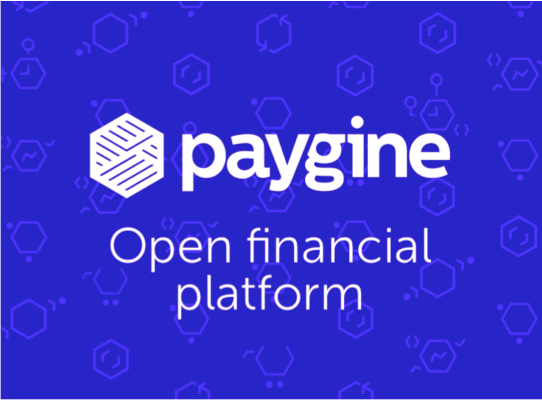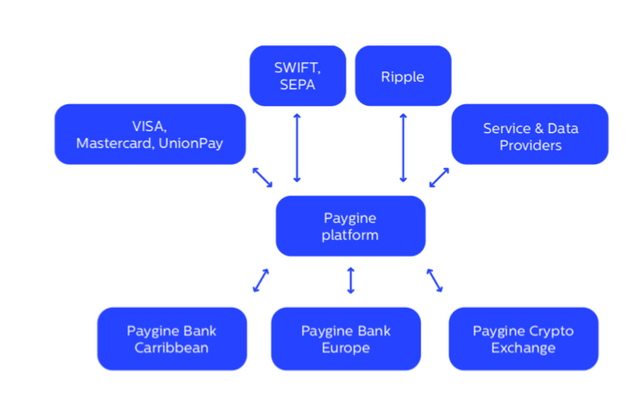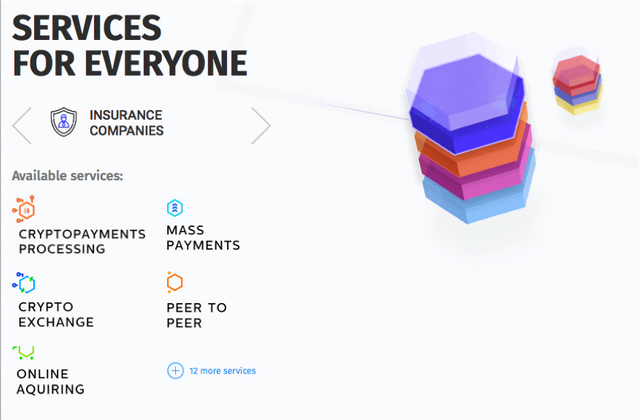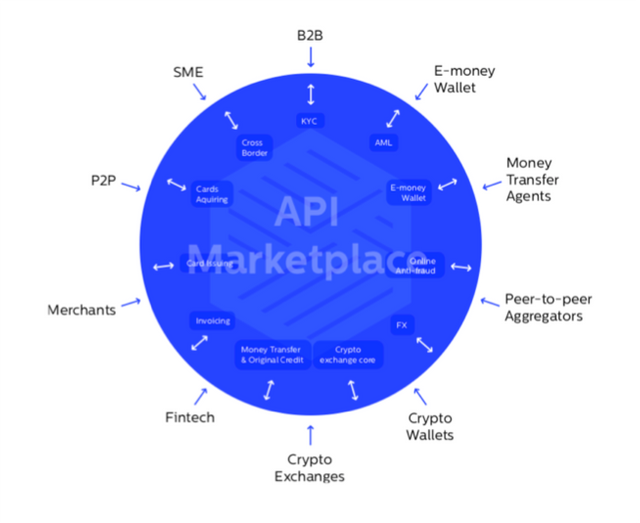Paygine: Finally, the Cryptocurrency was “Allowed” Into the Banks
However much we adopt the blockchain, the bank regulation remains. Development of a payment platform is a long process, everyone used the exchangers ... Until Paygine appeared.

Figure 1. Paygine - an open platform for the cryptocurrency projects
English company Best2pay offers a platform that solves the problem with payments - Paygine Developers have experience in integrating the FinTech projects to the requirements of banks, regulators and all others in need of legal status. Therefore, the platform is adapted to local legislation, thus, the accounts won't be blocked. The task of Paygine is to become an intermediary between the new crypto project and the banking structure so that transactions can proceed quickly and without problems.
How Does Paygine Work and Who will Benefit From It?
The basis of the platform is the White label service. Paygine checks the project for compliance with the terms of banking regulation, applies for opening an account under its own brand. Bank accounts are "packaged" in White brand Paygine, confirmed by the guarantees of developers. The solution is beneficial for everyone: the cryptproject receives the legal status, quick payments, while Paygine expands the partner network, the banking sector continues to track transactions.

Figure 2. The logic of Paygine's work - the interaction of banking structures and the blockchain
Technical implementation of Paygine is an open, modular API, a set of simple (pre-approved) templates for programmers, on the basis of which you can build any application. "Draft" is transferred to Paygine, receives approval, get "packed" in the project brand, and is submitted to the bank for opening an account.
The platform solves six key business problems that work with cryptocurrency.
1. AML (anti-money laundering). Counteraction to money laundering from the perspective of banks - a long procedure for checking documents, business models. Paygine adapts the client platform to banking requirements, protects the economy from scammers.
2. Virtual Cards - the platform provides electronic wallets for the withdrawal of the cryptocurrency, fiat money, the transaction scheme is debugged, passes quickly. There is no need to "reinvent the wheel" - Paygine came up with everything.
3. Online Anti-Fraud - established systems of two-factor authentication, access by the fingerprints... Tools for protecting counterparties are included in the API, the programmers just need to adapt them to the project.
4. Peer-to-Peer Aggregators – the banking transactions are direct. This speeds up the work, eliminates the incompatibility of the technologies, the need to "adopt" the program code to the requirements of the third-party applications.
5. Invoicing is a tool for billing in cryptocurrency and fiat money. Paygine creates templates of payment documents, prepares papers for processing the debit cards. Payments pass safely (as usual on a blockchain) and according to the requirements of the law (as usual accounting programs).
6. Partnership - Best2pay company has an extensive network of commercial partners that can provide its clients with guarantees, vouch for them before banking structures and supervisory bodies. Unlike regular ICOs, work with which is a risk for everyone, cooperation with Paygine clients causes trust in advance.
7. Developers have already implemented the functions of online shopping, electronic billing, international transfers from card to card to the platform, the users are also available to repay loans and borrowings. Paygine is aimed at owners of online stores, trading platforms, cryptocurrency exchangers, and insurance companies. The platform focuses on the FinTech business in need of a ready ecosystem: Paygine offers trading solutions, ready-made KYC procedure templates, e-wallet, issue of cards, exchange of cryptocurrency for fiat money, and withdrawal of various currencies.

Figure 3. The concept of the project - a single service for everyone working with cryptocurrency
Whitepaper of the project is built with a focus on the needs of users: technical capabilities are divided according to the categories of the target audience. Great news for a long-term investor - the creators conducted a large-scale market research, identified the problems of the cryptocurrency industry, and offer a modern and profitable product.
How will the ICO Paygine be Heeld and What will be With the Project Next?
The developers released 151.75 million PGC at a price of 1 dollar for each, the coin standard is ERC20, compatible with Ethereum smart contract. Tokens are sold in three stages: PreSale was held on December 26, 2017, the tokens were sold for 40 cents. PrivateSale is held on May 18 - June 17, 2018, the minimum contribution for the investor is 10 thousand dollars, the rate - 1 USD to 1.3 PGC. The main stage of the ICO will be held from June 18 to August 17, investors are offered a bonus of 30% during the first week.
Most of the tokens (56.59%) will constitute the reserve fund of the platform, 27.92% will be realized during the ICO, 14.71% will pass to team members, 0.78% will be invested in Bounty to attract attention. The majority of collected funds (64.9%) will cover the costs of purchasing shares of various banks, 18.3% will be staff costs, 10.3% will be spent on purchasing and developing of the software, 4.8% will be spent on obtaining licenses and registration, 1.6% will cover operating expenses.

Figure 4. Project API perspectives: a free market for applications implementation
The roadmap of the project is divided into three stages. The first one (3 years) is devoted to purchases of international banks, an adaptation of key platform functions, registration, licensing. The second stage (also three years) will be devoted to the expansion of Paygine, the opening API for global services. The third stage (30 months) is planned to be devoted to the opening of the branch network around the world.
Website: https://www.paygine.com/
WP: https://www.paygine.com/assets/helpers/files/en.pdf
Author on BCT: Melnikof https://bitcointalk.org/index.php?action=profile;u=1152502